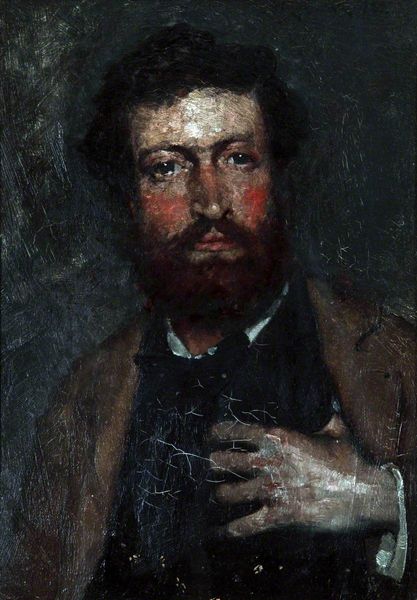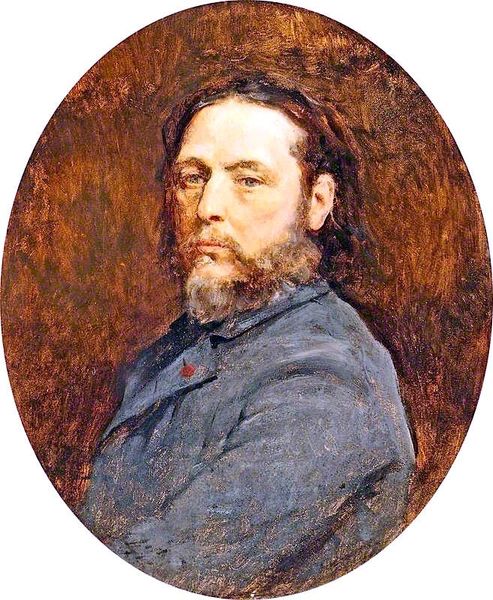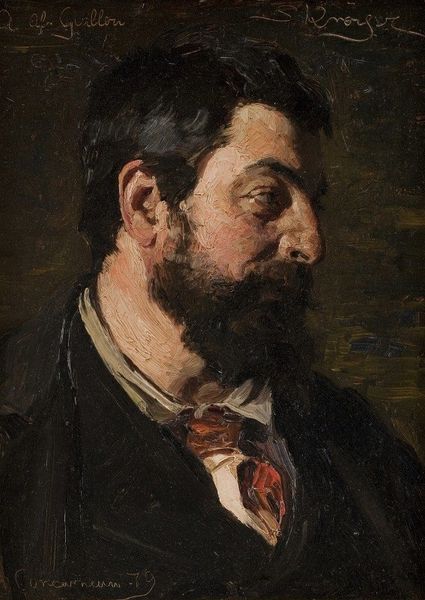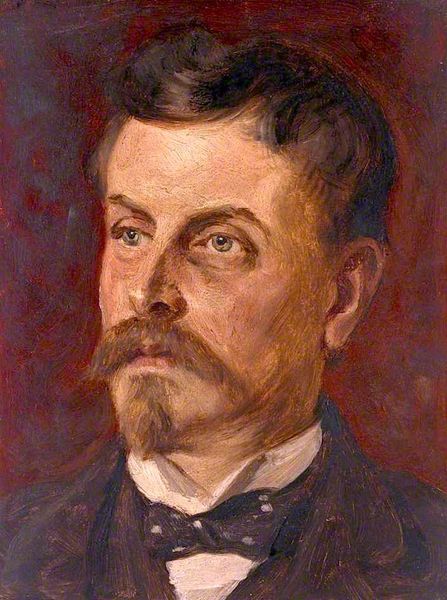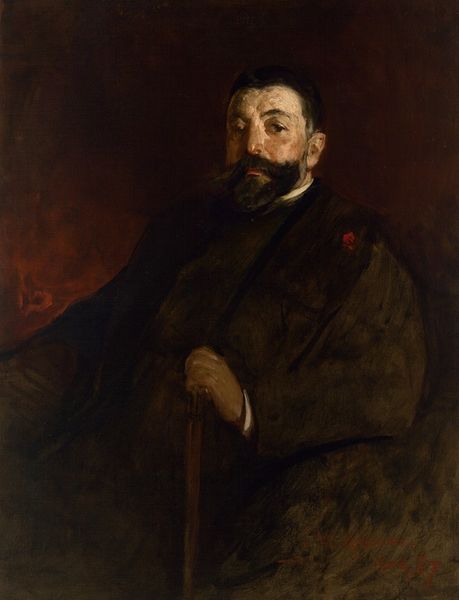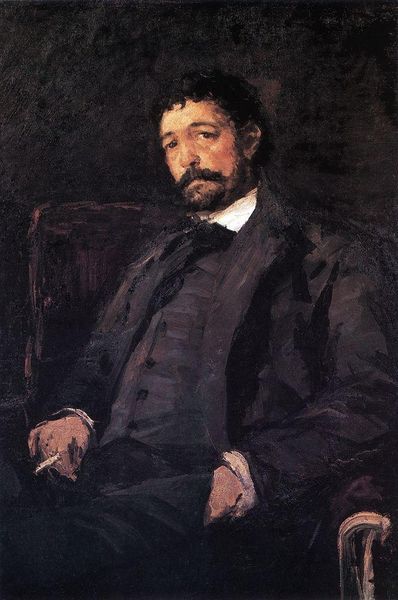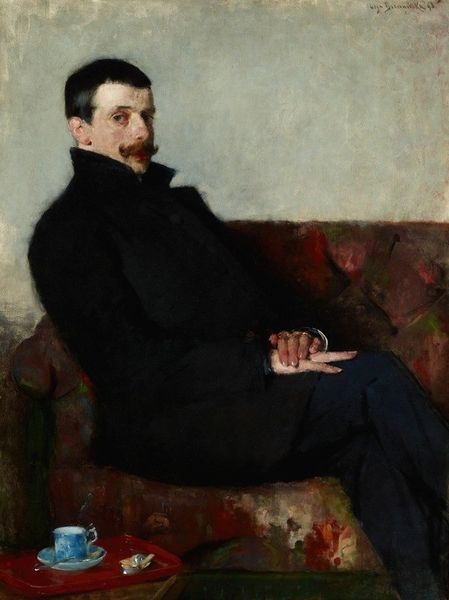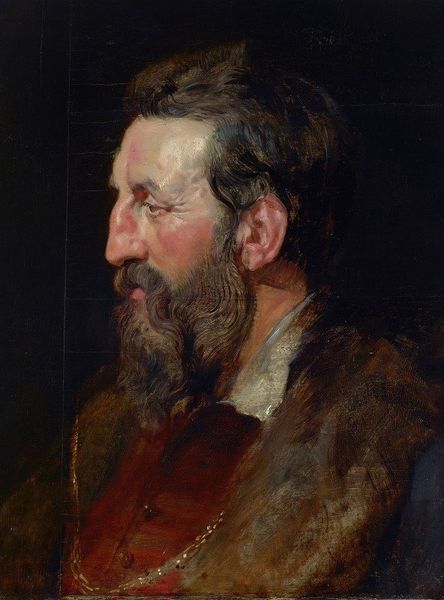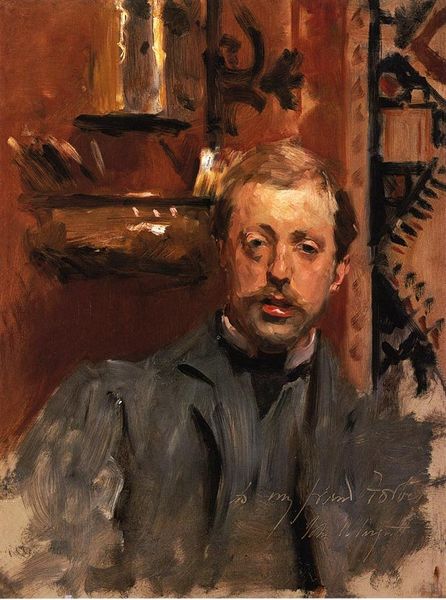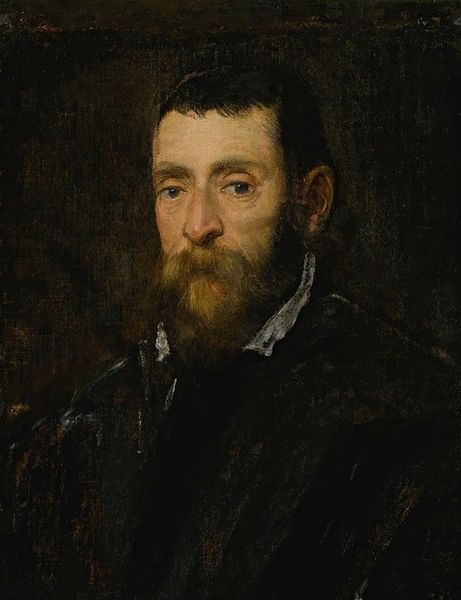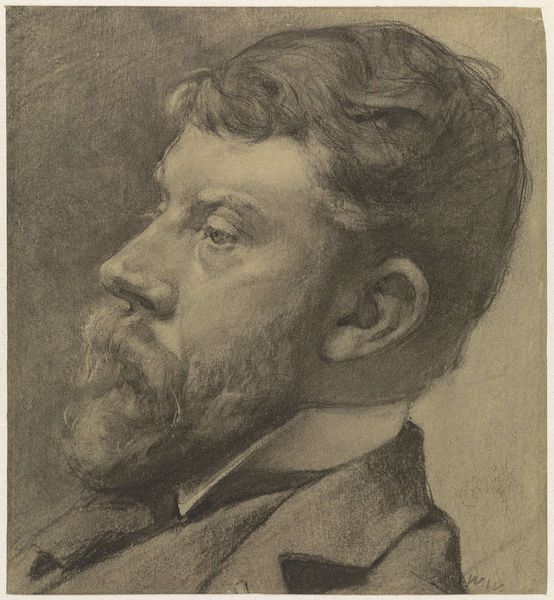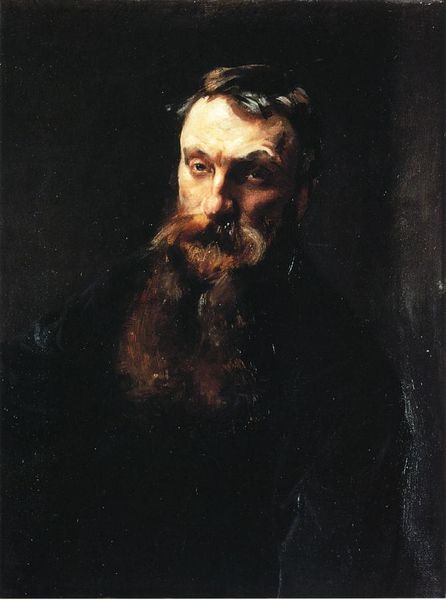
#
charcoal drawing
#
portrait reference
#
portrait head and shoulder
#
animal drawing portrait
#
portrait drawing
#
facial study
#
facial portrait
#
portrait art
#
fine art portrait
#
digital portrait
Copyright: Public domain
Editor: So, this is William Logsdail's "John Scott," created in 1883. It looks like it’s done in charcoal... very dark and moody. It's interesting how the artist focused on the face, leaving the rest quite shadowy. What strikes you most when you look at this portrait? Curator: I'm immediately drawn to the gaze. He is not directly engaging the viewer. He looks away. This slight detachment evokes a sense of contemplation, maybe even a bit of melancholy. Note the symbolic weight of the moustache -- its careful cultivation hints at status. What feelings do you pick up from that facial hair? Editor: Hmm, I see what you mean. Maybe pride or… a stiff upper lip kind of thing? So it communicates a certain cultural idea? Curator: Precisely. This image presents itself as a very British character -- think Victorian values. Moreover, notice the lack of specific detail around him. The dark space removes him from a setting and, indeed, connects him more clearly with an archetype of the Victorian gentleman, burdened by his societal expectations and driven by deep introspection. Do you notice that feeling conveyed? Editor: Yes, I get that sense now that you point it out! Almost trapped by his own image. I hadn’t thought of that! It feels very different. Curator: Think how Logsdail frames Scott: the shadow becomes an echo of cultural memories. So the portrait is not only about the individual, but about society as a whole. Editor: I’m beginning to understand. The artist is really saying a lot through a rather simple composition! Thank you! Curator: Indeed. It reminds us how potent seemingly straightforward portraits can be as time capsules for bygone social beliefs and self-conceptions.
Comments
No comments
Be the first to comment and join the conversation on the ultimate creative platform.
